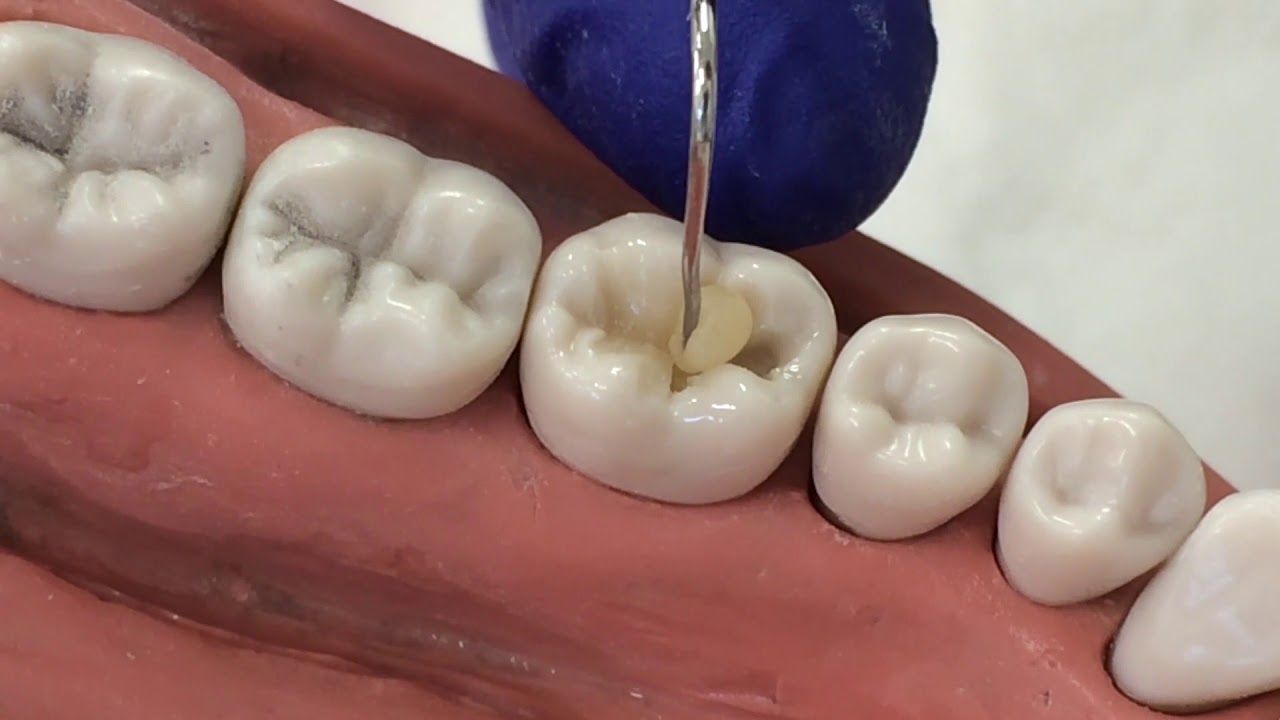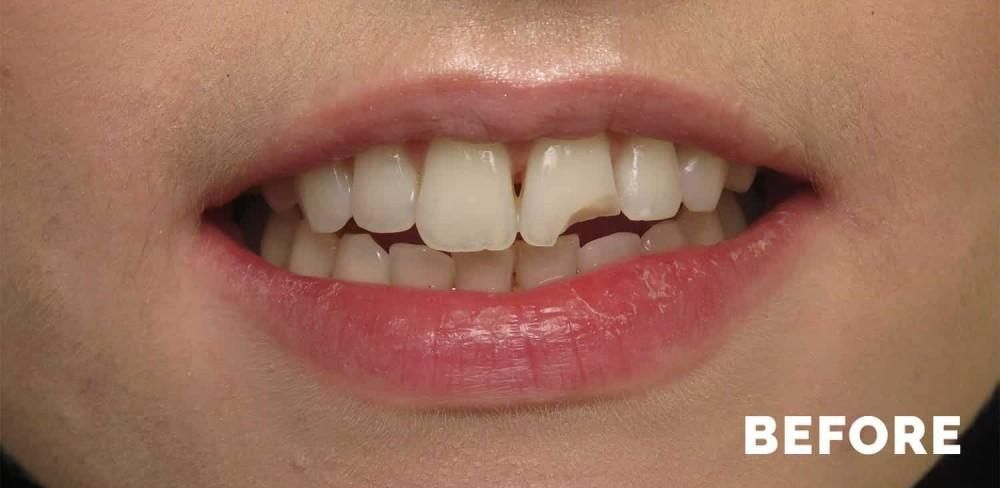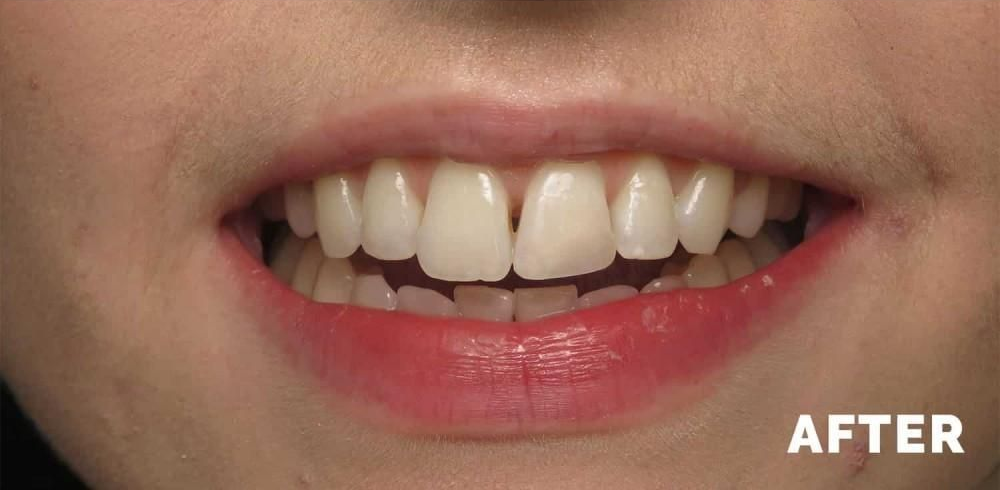Dental Fillings & Tooth-Colored Fillings In Oakland, CA
Restoring Teeth With Strength and a Natural Look
Dental fillings are one of the most common treatments in dentistry, designed to restore teeth that have been affected by decay, fractures, or wear. By replacing damaged tooth structure with durable filling material, your dentist can reestablish proper function, protect the tooth from further damage, and maintain the natural shape of your smile.
At our office, we focus exclusively on resin-based, tooth-colored fillings—also known as white fillings or composite fillings. These restorations are carefully matched to the color of your natural teeth, allowing us to repair cavities and chips while blending seamlessly with your smile. Unlike older metal fillings, resin fillings are safe, esthetic, and bond directly to the tooth for long-term strength.
Why Dental Fillings Are Needed
Teeth are strong, but daily chewing forces, bacteria, and accidents can take their toll. When decay or trauma weakens the enamel, the inner layers of the tooth become vulnerable to infection and further breakdown.
Without treatment, cavities and cracks can:
- Expose the tooth’s nerve, causing pain and sensitivity
- Weaken tooth structure and increase the risk of fractures
- Allow bacteria to spread, leading to infection or tooth loss
- Make everyday activities like chewing and speaking more difficult
A dental filling halts this process by replacing the damaged portion of the tooth with a strong material. This not only prevents decay from progressing but also restores the tooth’s natural shape and function.
Early treatment is always best. When a cavity is detected and filled promptly, more healthy tooth structure can be preserved, treatment is simpler, and the tooth remains stronger for the long term.



Benefits of Tooth-Colored Resin Fillings
Tooth-colored fillings offer many advantages over traditional silver or amalgam restorations. Patients appreciate them not only for their appearance but also for their overall performance and safety.
Key benefits include:
- Natural appearance: Composite resin is custom-shaded to match your teeth, making the filling virtually invisible.
- Strong bond: Resin fillings chemically bond to tooth enamel, restoring 85–95% of the original tooth strength without removing healthy structure.
- Durability: When properly cared for, resin fillings can last many years and withstand everyday chewing forces.
- Quick curing: Fillings harden in seconds under a special light, so you leave the office with a fully functional tooth the same day.
- Versatility: In addition to repairing decay, resin can reshape worn teeth, close small gaps, and repair chips or cracks.
- Safe and conservative: Unlike amalgam, resin does not contain mercury. It also requires less drilling since it adheres directly to enamel and dentin.
- Repairable: If a resin filling becomes worn or chipped, it can often be repaired without replacing the entire restoration.
Because of these benefits, resin fillings are suitable for both front and back teeth, making them an excellent all-around solution for most patients.
How Resin Fillings Are Placed
The placement process for a tooth-colored filling is straightforward, comfortable, and usually completed in a single appointment.
- Preparation – After reviewing your medical history, the dentist numbs the area if needed. Any decay or weakened enamel is carefully removed, leaving a healthy foundation.
- Tooth conditioning – A gentle primer solution opens microscopic pores in the enamel and dentin. A bonding agent is then applied and cured, preparing the surface for the resin.
- Placement of resin – The tooth-colored composite is layered into the prepared space. Each layer is shaped and cured with a special light to harden it instantly.
- Shaping and polishing – Once the filling is fully cured, the dentist sculpts it to mimic your tooth’s natural anatomy, checks your bite, and polishes the surface to a smooth finish.
Because resin bonds directly to the tooth, this process often requires less drilling than traditional silver fillings, preserving more of your natural tooth structure.
What to Expect After Treatment
Most patients experience little to no discomfort after receiving a resin filling. Any mild sensitivity to temperature or pressure typically fades within a few days.
Aftercare tips include:
- Avoid chewing hard foods (ice, hard candy, nuts) on the new filling for the first 24 hours.
- Maintain excellent oral hygiene by brushing twice daily and flossing once a day.
- Schedule regular checkups so your dentist can monitor the condition of your fillings.
Tooth-colored fillings are stain-resistant but may darken slightly over time with frequent exposure to coffee, tea, red wine, or tobacco. Professional cleanings help keep them looking their best.
Why We Choose Resin Fillings
While patients may have heard about other filling materials—such as silver amalgam, gold, or porcelain inlays—we have chosen to focus exclusively on resin fillings for several important reasons:
- They are more esthetic and blend naturally with your smile.
- They require less removal of healthy tooth structure compared to amalgam.
- They avoid concerns over mercury content.
- They can be easily repaired if needed.
- They provide excellent strength and durability for everyday use.
For patients, this means receiving a filling that not only restores function but also enhances appearance and peace of mind.
Make an appointment today to get your smile checked and discuss your dental concerns.
Read more about dental veneers
Restoring Teeth With Strength and a Natural Look
Dental fillings are one of the most common treatments in dentistry, designed to restore teeth that have been affected by decay, fractures, or wear. By replacing damaged tooth structure with durable filling material, your dentist can reestablish proper function, protect the tooth from further damage, and maintain the natural shape of your smile.
At our office, we focus exclusively on resin-based, tooth-colored fillings—also known as white fillings or composite fillings. These restorations are carefully matched to the color of your natural teeth, allowing us to repair cavities and chips while blending seamlessly with your smile. Unlike older metal fillings, resin fillings are safe, esthetic, and bond directly to the tooth for long-term strength.
Why Dental Fillings Are Needed
Teeth are strong, but daily chewing forces, bacteria, and accidents can take their toll. When decay or trauma weakens the enamel, the inner layers of the tooth become vulnerable to infection and further breakdown.
Without treatment, cavities and cracks can:
- Expose the tooth’s nerve, causing pain and sensitivity
- Weaken tooth structure and increase the risk of fractures
- Allow bacteria to spread, leading to infection or tooth loss
- Make everyday activities like chewing and speaking more difficult
A dental filling halts this process by replacing the damaged portion of the tooth with a strong material. This not only prevents decay from progressing but also restores the tooth’s natural shape and function.
Early treatment is always best. When a cavity is detected and filled promptly, more healthy tooth structure can be preserved, treatment is simpler, and the tooth remains stronger for the long term.



Benefits of Tooth-Colored Resin Fillings
Tooth-colored fillings offer many advantages over traditional silver or amalgam restorations. Patients appreciate them not only for their appearance but also for their overall performance and safety.
Key benefits include:
- Natural appearance: Composite resin is custom-shaded to match your teeth, making the filling virtually invisible.
- Strong bond: Resin fillings chemically bond to tooth enamel, restoring 85–95% of the original tooth strength without removing healthy structure.
- Durability: When properly cared for, resin fillings can last many years and withstand everyday chewing forces.
- Quick curing: Fillings harden in seconds under a special light, so you leave the office with a fully functional tooth the same day.
- Versatility: In addition to repairing decay, resin can reshape worn teeth, close small gaps, and repair chips or cracks.
- Safe and conservative: Unlike amalgam, resin does not contain mercury. It also requires less drilling since it adheres directly to enamel and dentin.
- Repairable: If a resin filling becomes worn or chipped, it can often be repaired without replacing the entire restoration.
Because of these benefits, resin fillings are suitable for both front and back teeth, making them an excellent all-around solution for most patients.
How Resin Fillings Are Placed
The placement process for a tooth-colored filling is straightforward, comfortable, and usually completed in a single appointment.
- Preparation – After reviewing your medical history, the dentist numbs the area if needed. Any decay or weakened enamel is carefully removed, leaving a healthy foundation.
- Tooth conditioning – A gentle primer solution opens microscopic pores in the enamel and dentin. A bonding agent is then applied and cured, preparing the surface for the resin.
- Placement of resin – The tooth-colored composite is layered into the prepared space. Each layer is shaped and cured with a special light to harden it instantly.
- Shaping and polishing – Once the filling is fully cured, the dentist sculpts it to mimic your tooth’s natural anatomy, checks your bite, and polishes the surface to a smooth finish.
Because resin bonds directly to the tooth, this process often requires less drilling than traditional silver fillings, preserving more of your natural tooth structure.
What to Expect After Treatment
Most patients experience little to no discomfort after receiving a resin filling. Any mild sensitivity to temperature or pressure typically fades within a few days.
Aftercare tips include:
- Avoid chewing hard foods (ice, hard candy, nuts) on the new filling for the first 24 hours.
- Maintain excellent oral hygiene by brushing twice daily and flossing once a day.
- Schedule regular checkups so your dentist can monitor the condition of your fillings.
Tooth-colored fillings are stain-resistant but may darken slightly over time with frequent exposure to coffee, tea, red wine, or tobacco. Professional cleanings help keep them looking their best.
Why We Choose Resin Fillings
While patients may have heard about other filling materials—such as silver amalgam, gold, or porcelain inlays—we have chosen to focus exclusively on resin fillings for several important reasons:
- They are more esthetic and blend naturally with your smile.
- They require less removal of healthy tooth structure compared to amalgam.
- They avoid concerns over mercury content.
- They can be easily repaired if needed.
- They provide excellent strength and durability for everyday use.
For patients, this means receiving a filling that not only restores function but also enhances appearance and peace of mind.
Make an appointment today to get your smile checked and discuss your dental concerns.
Read more about dental veneers
